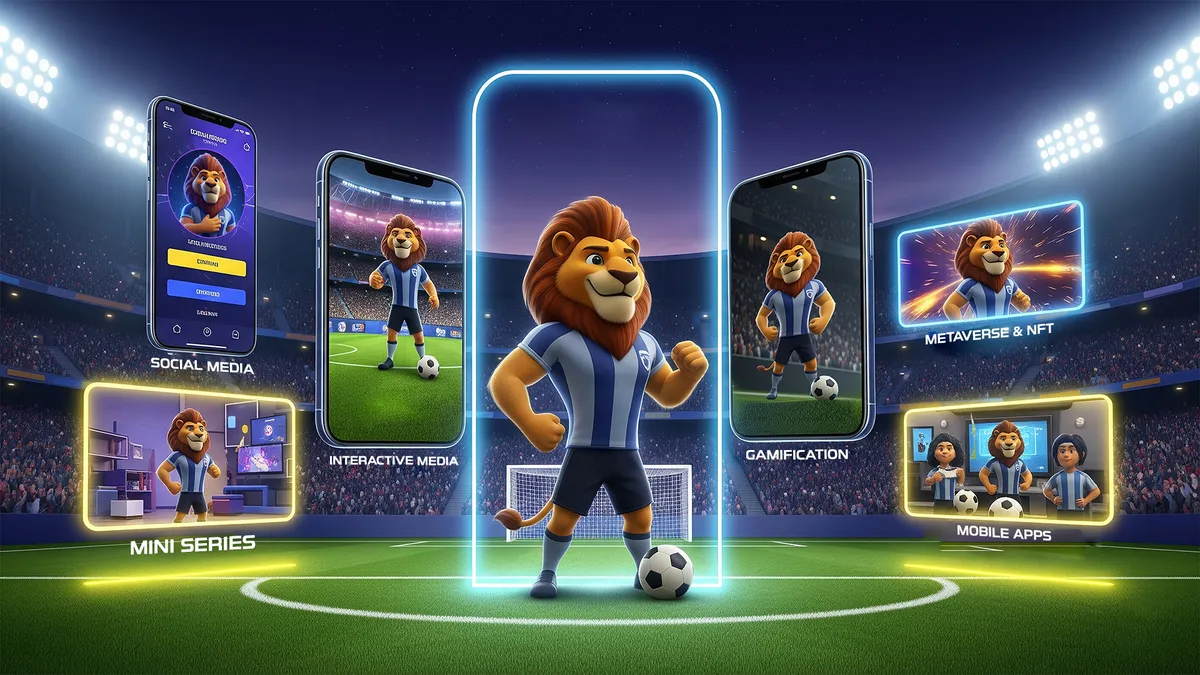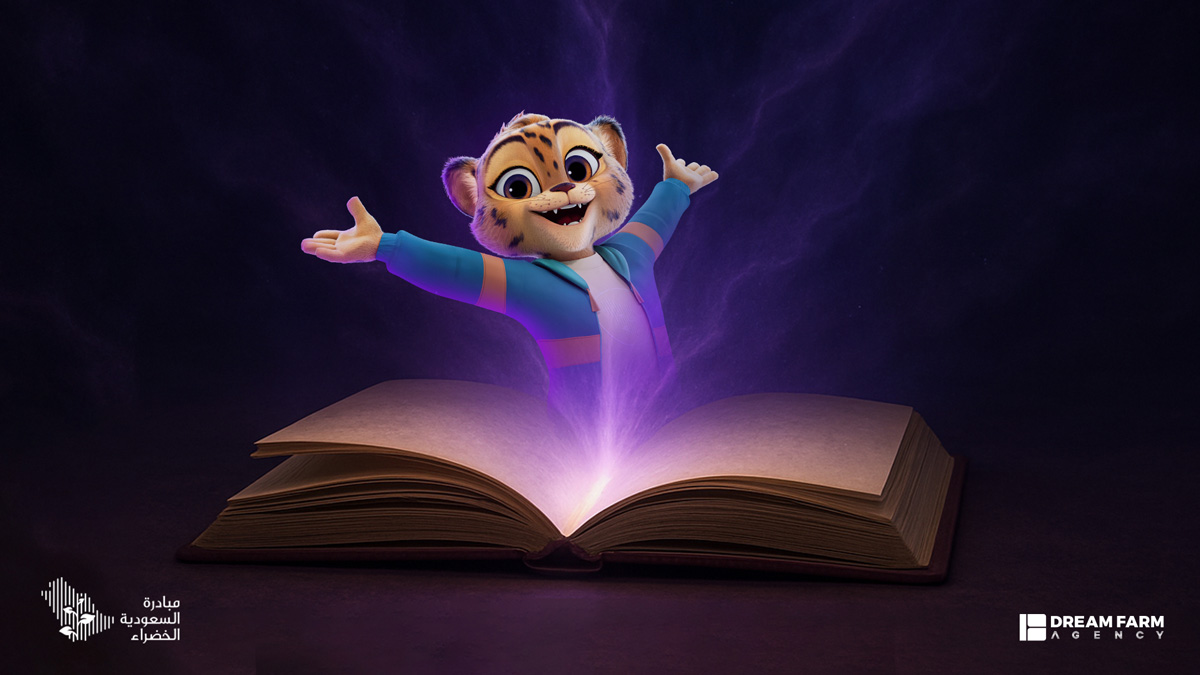
All brand mascots need a well-defined profile. In this blog, we’ll discuss the significance of creating a brand mascot character profile and walk you through the process.
A good profile ensures consistency across all channels and helps you use the brand’s character strategically. Therefore, you can’t skip developing a perfect profile since all efforts related to the mascot will be wasted without it.
Let’s begin by ensuring we have a solid understanding of what brand mascots are.
Definition of Brand Mascots in Short
In summary, a brand mascot is a creation of a business that represents the brand in various marketing and advertising channels. Brand mascots are considered the face of the brand and instantly remind people of the company whenever they appear.
Mascots are categorized as brand characters, which means that all mascots are brand characters. However, the opposite is not true, and not all brand characters are necessarily brand mascots.
This blog aims to explore the creation of the mascot profile.
If you’re thinking about adding a mascot to your communication plan, our team is here to help.
With over 10 years of experience and the development of more than 2,500 characters, we’ll guide you through every step to unlock the full potential of your new team member!
Learn more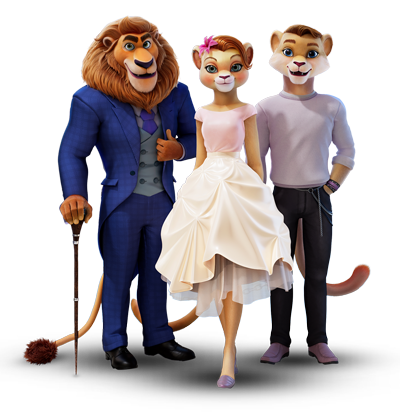
What Do We Mean By Brand Mascot Profile
Simply put, a character profile includes details about the mascot that shapes its existence.
Descriptions in a character profile influence the mascot’s appearance, personality, and even how it interacts with audiences.
We’re talking about a comprehensive document that outlines even the most minor details, which helps different departments in the company use the mascot for diverse purposes while maintaining consistency across all channels.
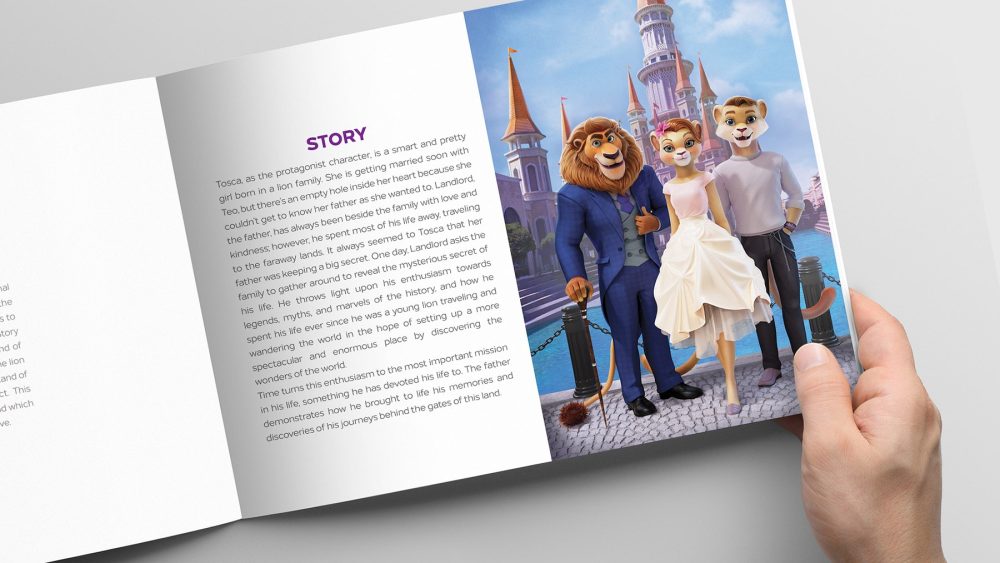
When creating the profile, those in charge must simultaneously consider the target audience and the brand’s principles. The reason is that the mascot must act as a representative of the brand and be beloved by the business’s target audiences. So, both parties are important in this process.
Long story short, a successful mascot requires a well-thought-out character profile, which proves the significance of dedicating time and resources to create an outstanding profile.
If you’re interested in gathering more information on mascot profiles, the blog “Backstory and Character Profiles in Brand Mascot” is the place to go.
Before creating a mascot profile, it’s best to familiarize yourself with the core elements of a well-established brand mascot character.
Core Components of A Brand Mascot Profile
There are five core components that brand mascot profiles must embody:
- Archetype: This defines the mascot’s essence and fundamental nature. The most renowned archetypes include the Hero, the Teacher, the Caregiver, and others.
- Personality and Characteristics: This element defines the mascot’s behaviors and traits. Here, you should ensure alignment between the brand’s values and the character’s attributes.
- The tone of Voice: This component decides the mascot’s communication style and language. In other words, it determines how the mascot will interact with the outside world.
- Color Scheme: What colors should designers use when creating the mascot? This component sets the rules and provides them with the correct color palette.
- Appearance: This component describes the mascot’s look, including all details, from facial features to body shape.
This is all you need to know before creating a profile for your brand’s mascot. Now, if you’re ready, it’s time for practical steps.
A Step-by-Step Guide For Creating the Brand Mascot Character Profile
Honestly, it’s not easy and delegating the task to those with the required skills is suggested. However, whether you choose to create the profile yourself or hire a skilled specialist to do the job, it’s important to understand the stages of the process.
At Dream Farm Agency, one of the initial steps in developing a brand mascot is creating a detailed profile. This profile will help us shape the mascot’s appearance and name, bringing it to life!
Let’s begin with:
1. Understanding Your Brand Identity
First and foremost, you should know your brand very well. Specifically, you should acknowledge the brand’s core values and mission. Recall that a good brand mascot must act as the perfect representative. As a result, you must know the goals the brand aims to achieve faultlessly in the process.

Find answers to these questions:
- Who are your target audiences, and what are their preferences?
- What are the brand’s values and missions?
- What do the brand’s guidelines say about visuals related to the business?
- What attributes define the brand’s personality?
In essence, the more information you gather about the brand, the more prepared you will be to create an excellent profile for the mascot.
2. Defining the Mascot’s Archetype
Earlier in the blog, we briefly discussed the definition of archetypes. If you need more information in this regard, read the blog “Brand Archetypes: The Complete Guide.”
In the second step of creating a profile for the brand’s mascot, you must choose the appropriate archetype for the character that will act as your brand representative, AKA mascot.
The understanding you gained in the first stage comes in handy in this stage of the process. The mascot’s archetype must align with the brand’s essence and core values. In simpler terms, selecting the right archetype ensures that the mascot will move along the path that the brand itself takes.
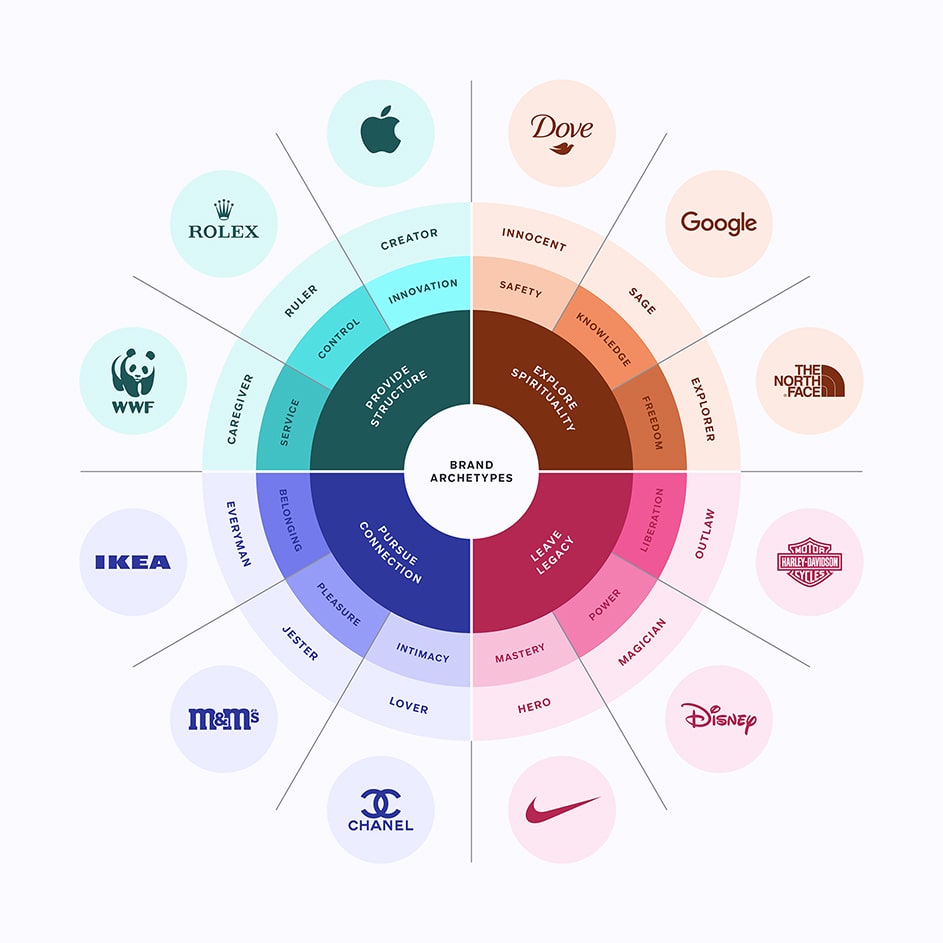
For example, a brand that prioritizes innovation may choose the Magician archetype to demonstrate its eagerness for creativity and thinking outside the box. On the other hand, a business that focuses on open communication may find the Caregiver archetype the best choice.
Before proceeding to the next step, let us assure you that your decision in this stage will significantly impact the mascot in all aspects.
3. Developing the Mascot’s Personality and Characteristics
Selecting the best archetype for your mascot that perfectly suits your brand will make this stage much easier. Remember that creating a brand mascot character profile aims to add depth to the character. As a result, you must define a highly detailed personality at this stage.
Review your brand’s values and traits you expect to witness from the chosen archetype. Here is an example:
If your business values impact the market and orient competitors’ efforts, chances are you chose the Leader archetype in the previous phase. Therefore, consider all the attributes one expects from a leader.
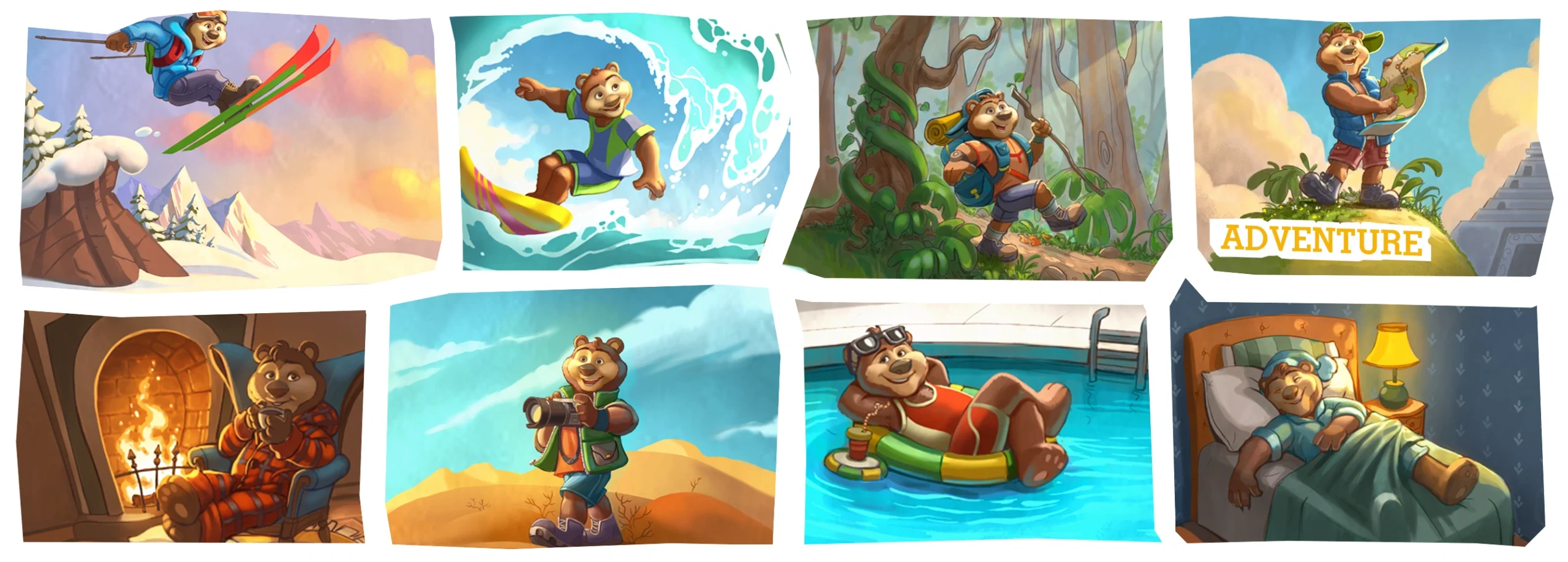
The mascot should speak in a commanding yet respectable voice.
Overall, details about behavioral patterns, core personality traits, and communication style must be decided in this phase.
Additionally, it’s best to add some distinctive quirks to set your mascot apart from all other brands in the same industry.
4. Establishing the Mascot’s Tone of Voice
What words does the mascot choose in communication? Casual ones or formal terms? In this phase of the process, dedicated to finding the best tone of voice, you’ll determine how the mascot will interact with the public. However, the tone of voice goes beyond word selection and influences the emotion behind each sentence and the style that represents those terms.
Once again, the impact of the brand’s values and defined archetype is visible here. As mentioned above, a leader should speak as one, just as a caregiver must show empathy and use kind words.
Let’s say that most aspects of tone of voice will be defined automatically when you decide about the archetype and, before that, when you determine the brand’s values and missions. In fact, this step is about adjusting the tone of voice and enhancing it according to the detailed characteristics of the business.
5. General ideas about the appearance of the mascot
The mascot’s visuals are probably the most important aspect of such characters. At first glance, audiences only notice how the mascot looks. After that, they go into detail, examining behavioral traits, tone of voice, and the archetype on which the mascot is based.
Since the first impression matters the most, it is critical to dedicate time and resources to crafting an appearance that excellently suits the brand and aligns with its core principles.
In an ideal situation, a well-designed mascot not only captures attention but also leaves a lasting impression on the target audience on an emotional level.
This step is where you determine whether the mascot should be a human, an animal, or a fictional creature that best represents your brand.
Opting for simple designs is recommended, as complexity can bring unpredictable challenges. Moreover, using the correct color palette in design is crucial to bringing the mascot to life while embodying the brand’s essence.
Don’t forget that your mascot is going to act as your business’s ambassador in various channels and situations. Therefore, consider this fact and prioritize flexible appearances when designing its shape and facial features.
Lastly, let us emphasize the importance of uniqueness. Go for designs that spark your brand’s name in people’s minds as soon as they see the mascot on any channel.
6. Crafting the Mascot’s Backstory
You’re almost finished. The last step in creating a brand mascot character profile is crafting the mascot’s backstory. The backstory is unnegotiable if you’re determined to add depth to the character.
We discussed the effectiveness of good storytelling in several blogs, and in all of them, we mentioned that human beings have loved stories from ancient times to the present. Crafting a backstory for the mascot and the imaginary world it belongs to helps make it more relatable to the business’s target audience.
Define the mascot’s origin and why it represents your brand. How do both parties come together? How old is it? What are its values? According to its age and what it has been through, is it playful or serious? What dramas and challenges did it pass?
In summary, just like any of us with our own history, your mascot should have one, and it’s your responsibility to craft an attention-grabbing one at the last phase of creating the profile.
This is the process of creating a worthy profile, which we broke into six steps. Let’s move forward, and we’ll give you some practical suggestions for doing this task more efficiently.
Golden Tip: Leave Room For Possible Evaluations in the Future
As mentioned earlier, a brand mascot character profile should follow the brand’s values and guidelines to accurately represent the business across diverse channels. However, adopting a flexible approach is advised, in case you need to adjust the mascot in the future.
Market trends and target audiences’ expectations evolve over time, and it’s not logical to stick to a strategy for a long period, as it will no longer be as effective as it was in the past. Therefore, reassessing the brand’s principles from time to time is inevitable.
Several big names in various industries have done it before, and your business is no exception if you plan to stay in the game for the long run.
Sleepy Bear of Wyndham is a good example; they came to us with their cherished mascot, Sleepy Bear, who has been the comforting symbol of the brand for an incredible 70 years. With a vision to evolve Sleepy Bear into a more adventurous figure that reflects Travelodge’s expanding brand spirit, they sought to update the character’s look and introduce a modernized version into their marketing and branding campaigns.
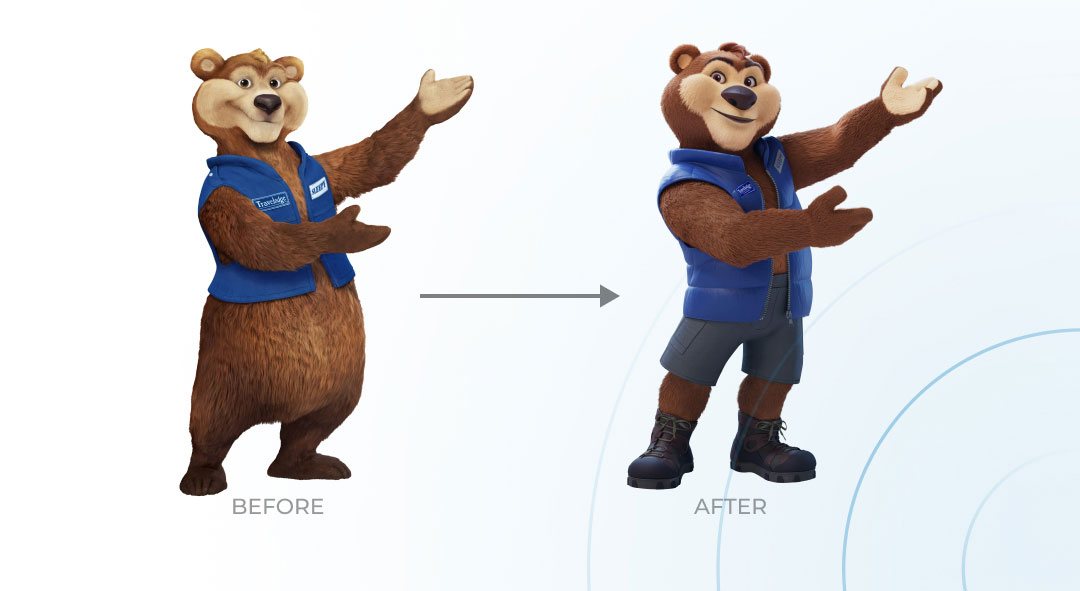
The brand mascot profile document is not a static document for a hundred years! Brand managers should update it according to changes in the brand, products, marketing channels, or competitor actions. So, it’s best to monitor the market continuously and be notified of any significant shifts as soon as they occur.
Leaving room for probable changes in the mascot’s profile ensures that you can adjust the character to represent the new form of the brand flawlessly without needing to create a new mascot from scratch.
We’ll Create Your Mascot’s Profile
If this is your first time creating a brand mascot character profile, the process will definitely be time-consuming. Even after reading this guide and understanding the stages that lead to crafting a perfect profile, you’ll face numerous challenges that you’ll probably struggle to overcome. Additionally, not all businesses have the necessary resources to craft a superb profile that perfectly shapes the mascot.
That’s why, in many cases, it’s best to outsource the process to agencies with a proven track record of successful profile creations and dedicate your time to more sensitive business-related matters.
Our specialists are here to help you create an excellent profile for your brand’s mascot that perfectly fits your needs and core values.
Contact us now, and let’s discuss the details.
Nikan


